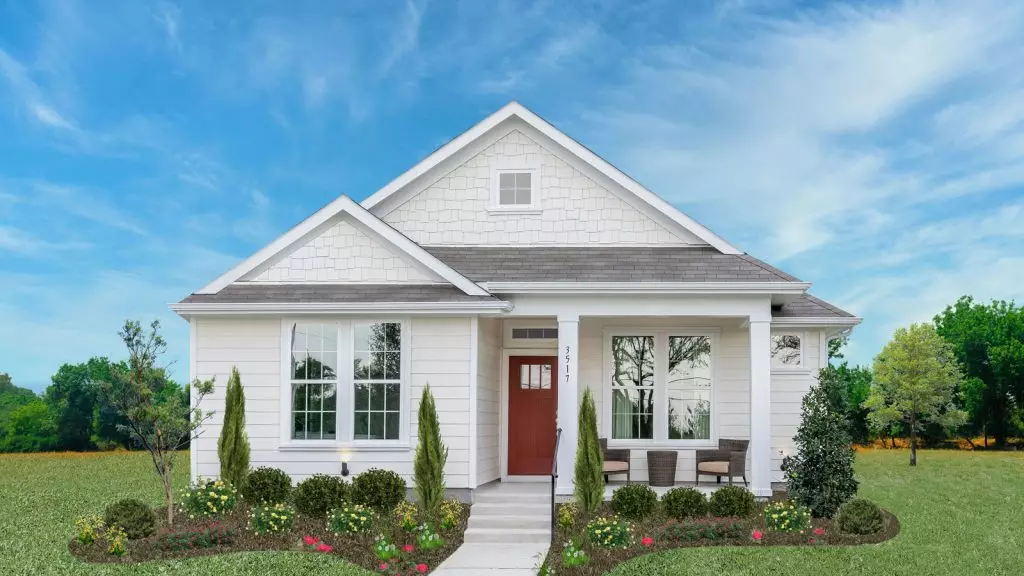
When it comes to architectural design and home remodelling, turning an idea into a reality usually takes more than one step of planning, putting it into action, and making it better. House rendering is an important part of this trip. This method has become very popular recently because it can improve the look and durability of individual homes.
House rendering is the process of giving the outside walls of a building a special finish or paint. This process does many things, such as making the building look better, protecting it from the weather, and making it more thermally efficient. Rendered surfaces can be smooth or rough, and they come in many colours and finishes to match different types of architecture and personal tastes.
The Evolution of House Rendering:
The practice of rendering buildings dates back centuries, with historical examples found in ancient civilizations such as Egypt, Greece, and Rome. In those times, rendering materials were typically made from natural substances like clay, lime, and sand. However, modern advancements have introduced a wide range of synthetic render products that offer enhanced durability, flexibility, and aesthetic appeal.
Types of House Rendering:
Today, there are several types of rendering techniques used in residential construction, each with its unique characteristics and benefits:
Cement Rendering: Using this traditional way, you put a mix of cement, sand, and water on the outside walls of a building. So it can be used in many climates and building types. This is because cement rendering lasts a long time and is not damaged by the weather.
Acrylic Rendering: Acrylic rendering is a more flexible and lightweight alternative to traditional cement render. It consists of acrylic polymers, additives, and colour pigments, which can be customized to achieve different textures and finishes. Acrylic rendering is known for its fast drying time and crack resistance, making it ideal for modern homes and renovations.
Polymer Rendering: Polymer render is a premium-quality finish that combines the benefits of acrylic and cement renders. It contains advanced polymer additives that improve adhesion, flexibility, and water repellency, resulting in a highly durable and long-lasting surface. Polymer rendering is often chosen for high-end residential projects where superior performance and aesthetics are desired.
Texture Coating: A decorative finish called texture coating is put on top of the base image to make it look more interesting and give it depth. It can be sprayed on or troweled onto the surface in several different ways, giving it a smooth, rough, or patterned look. Texture covering not only makes the building look better but also adds another layer of defence against damage from water and UV light.
Benefits of Professional House Rendering:
Investing in professional Zaks Render house rendering services offers numerous benefits for homeowners, including:
Improved Aesthetics: Rendering can transform the exterior of a home, giving it a fresh and modern look. With so many colours and finishes to choose from, homeowners can make their render fit their style tastes and go with the rest of their home’s architecture.
Enhanced Durability: Rendered surfaces are more resistant to cracking, fading, and weather damage compared to bare brick or concrete walls. Because it blocks moisture, UV rays, and pollutants, the protective layer makes the building last longer and costs less to maintain.
Increased Property Value: People are more likely to buy a home that has been well-rendered, and it can also sell for more money in the future. It looks better from the street and is thought to be of higher quality, which makes it a good investment for both homeowners and buyers.
Energy Efficiency: Some kinds of render, like insulated render systems, can help a building’s thermal performance by keeping heat in and letting less heat out. This can lower energy costs and make homes more comfortable for people to live in, especially in places where the weather is extreme.
The Future of House Rendering:
As technology continues to advance, the field of house rendering is poised for further innovation and evolution. Future trends may include:
Sustainable Materials: More and more people want eco-friendly rendering goods that are made from recycled or renewable materials. Manufacturers are exploring alternative ingredients and production methods to reduce environmental impact and promote sustainability.
Digital Design Tools: Architects and designers are increasingly using digital rendering software to visualize and simulate building projects before construction begins. These tools allow for greater precision, creativity, and collaboration, resulting in more efficient and cost-effective design solutions.
Smart Coatings: Researchers are developing smart coatings with advanced properties such as self-cleaning, self-healing, and colour-changing capabilities. These coatings could revolutionize the field of house rendering by offering enhanced performance, longevity, and maintenance benefits.
In conclusion, professional house rendering is a versatile and cost-effective solution for enhancing the appearance, durability, and value of residential properties. Whether renovating an existing home or building a new one, homeowners can benefit from the aesthetic appeal, weather protection, and energy efficiency that rendering provides. With ongoing advancements in materials, techniques, and design tools, the future of house rendering looks brighter than ever, promising even greater possibilities for innovation and sustainability.
